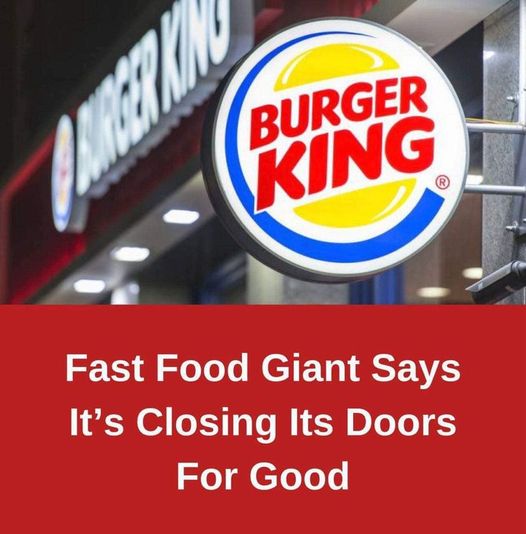Burger King, the well-known and well-recognized fast-food chain, has taken a brave and adventurous step by announcing the closure of many of its locations across the United States.
This strategic move is intimately knit into the fabric of the company’s larger strategy to restructure its operations and undertake a complete rebranding.
As we delve into the depths of this momentous choice, let us explore the reasons behind Burger King’s seismic move and the potential repercussions for you, the discerning consumer.
Burger King has been fearless in closing particular restaurants to achieve operational excellence. However, the announcement that around 400 outlets will be completed in the United States represents a significant break from the norm.
As the CEO of Burger King, Joshua Kobza has steadfastly underlined the company’s everlasting dedication to meeting and exceeding demanding operational criteria.
The quest to empower franchisees to oversee and guide restaurants that surpass the bounds of the ordinary, surging past the system’s median performance benchmarks, is central to their aim.
Burger King carefully directs its resources towards nurturing and fortifying its robust footprint of prospering outlets, optimizing its collective potential while organizing a phased exit for those franchisees unable to meet these enhanced requirements.
A Multifaceted Reinvigoration and Modernization Strategy

Within the tapestry of Burger King’s strategic canvas, reducing its operational presence fits into a larger strategy to revitalize its identity and boost prestige in the ruthless world of fast-food competitors.
As 2022 approached, the firm launched its ambitious “Reclaim the Flame” rebranding project, a massive undertaking backed by a whopping $400 million investment infusion.
This financial commitment was wisely allocated to breathe fresh life into the brand through various tactics, including inventive advertising campaigns, simplified menu curation, and extensive renovations to rekindle the brand’s magnetic attraction.
Burger King has set aside a luxurious $50 million over the next biennium to execute a comprehensive makeover across nearly 3,000 of its shops as a monument to its persistent dedication to modernity.
This complete rejuvenation process includes many improvements, from cutting-edge technical integrations to advanced culinary modifications to practical alterations that improve the overall customer experience.
Burger King effectively matches its services with the evolving expectations of contemporary consumers by embracing revolutionary concepts such as three-lane drive-thrus and pioneering delivery methods, ensuring that it remains at the forefront of the fiercely competitive fast-food sector.
Towards Burger King’s Prospective Trajectory
While navigating the complicated contours of this transformative journey, Burger King will face a mix of internal and external difficulties, each with its unique peculiarities. The epidemic exposed flaws in the company’s digital infrastructure, emphasizing its struggle to implement digitalization seamlessly.
This hampered its ability to manage the growing demand for online orders and doorstep deliveries. Furthermore, the venture into experimental menu items, exemplified by the Impossible Burger, provided its unique set of issues requiring competent and meticulous navigation.





